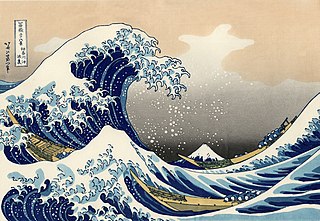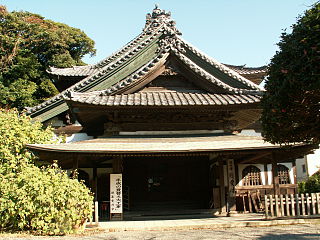Matsudaira Shigekatsu | |
|---|---|
| First (Nomi-Matsudaira) Daimyō of Sanjō | |
| In office 1612–1617 | |
| Preceded by | Hori Naokiyo |
| Succeeded by | Ichihashi Nagakatsu |
| Personal details | |
| Born | 1549 |
| Died | 1620 (aged 71) |
| Nationality | Japanese |
Matsudaira Shigekatsu(松平 重勝, 1549 – January 6, 1620) was a Japanese daimyō of the early Edo period. Also known as Denzaburō (伝三郎). Inherited headship of the Nomi-Matsudaira (能見松平) from his father, Matsudaira Shigeyoshi. He served as a retainer first to Tokugawa Ieyasu, fighting at Komaki-Nagakute, and later was assigned to Ieyasu's sixth son Tadateru as a senior retainer. Following the dissolution of Tadateru's domain, Shigekatsu was made daimyō of the Sekiyado Domain in Shimōsa Province. Soon afterward, in 1619, he was transferred to the Yokosuka Domain, in Tōtōmi Province, rated at 26,000 koku. At this time, he also served as warden of Ieyasu's castle at Sunpu. During his career, he acquired a court rank of "junior 5th lower grade", as well as the titles of Echizen no Kami 越前守 and Ōsumi no Kami 大隅守.

The daimyō were powerful Japanese feudal lords who, until their decline in the early Meiji period, ruled most of Japan from their vast, hereditary land holdings. In the term, dai (大) means "large", and myō stands for myōden(名田), meaning private land.

The Edo period or Tokugawa period (徳川時代) is the period between 1603 and 1868 in the history of Japan, when Japanese society was under the rule of the Tokugawa shogunate and the country's 300 regional daimyō. The period was characterized by economic growth, strict social order, isolationist foreign policies, a stable population, "no more wars", and popular enjoyment of arts and culture. The shogunate was officially established in Edo on March 24, 1603, by Tokugawa Ieyasu. The period came to an end with the Meiji Restoration on May 3, 1868, after the fall of Edo.

The Matsudaira clan was a Japanese samurai clan that claimed descent from the Minamoto clan. It originated in and took its name from Matsudaira village, in Mikawa Province. Over the course of its history, the clan produced many branches, most of which are also in Mikawa Province. In the 16th century, the main Matsudaira line experienced a meteoric rise to success during the direction of Matsudaira Motoyasu, who changed his name to Tokugawa Ieyasu and became the first Tokugawa shōgun. Ieyasu's line formed what became the Tokugawa clan; however, the branches retained the Matsudaira surname. Other branches were formed in the decades after Ieyasu, which bore the Matsudaira surname. Some of those branches were also of daimyō status.

![Matsudaira Tadanao [松平忠直] daimyo of the early Edo period; lord of Fukui](https://upload.wikimedia.org/wikipedia/commons/thumb/c/c2/Matsudaira_Tadanao.jpg/248px-Matsudaira_Tadanao.jpg)



![Matsudaira Tadamasa [松平忠昌] daimyo of the early Edo period; 3rd lord of Fukui](https://upload.wikimedia.org/wikipedia/commons/thumb/6/69/Matsudaira_Tadamasa.png/228px-Matsudaira_Tadamasa.png)


![Matsudaira Tadaaki [松平忠明] daimyo of the early Edo period](https://upload.wikimedia.org/wikipedia/commons/thumb/1/1d/%E6%9D%BE%E5%B9%B3%E5%BF%A0%E6%98%8E.jpg/207px-%E6%9D%BE%E5%B9%B3%E5%BF%A0%E6%98%8E.jpg)